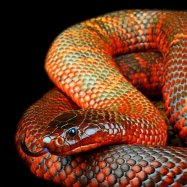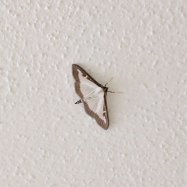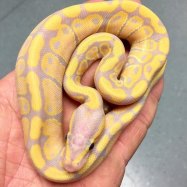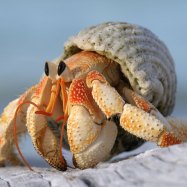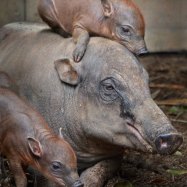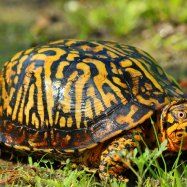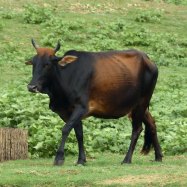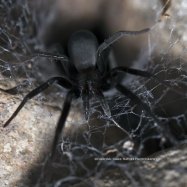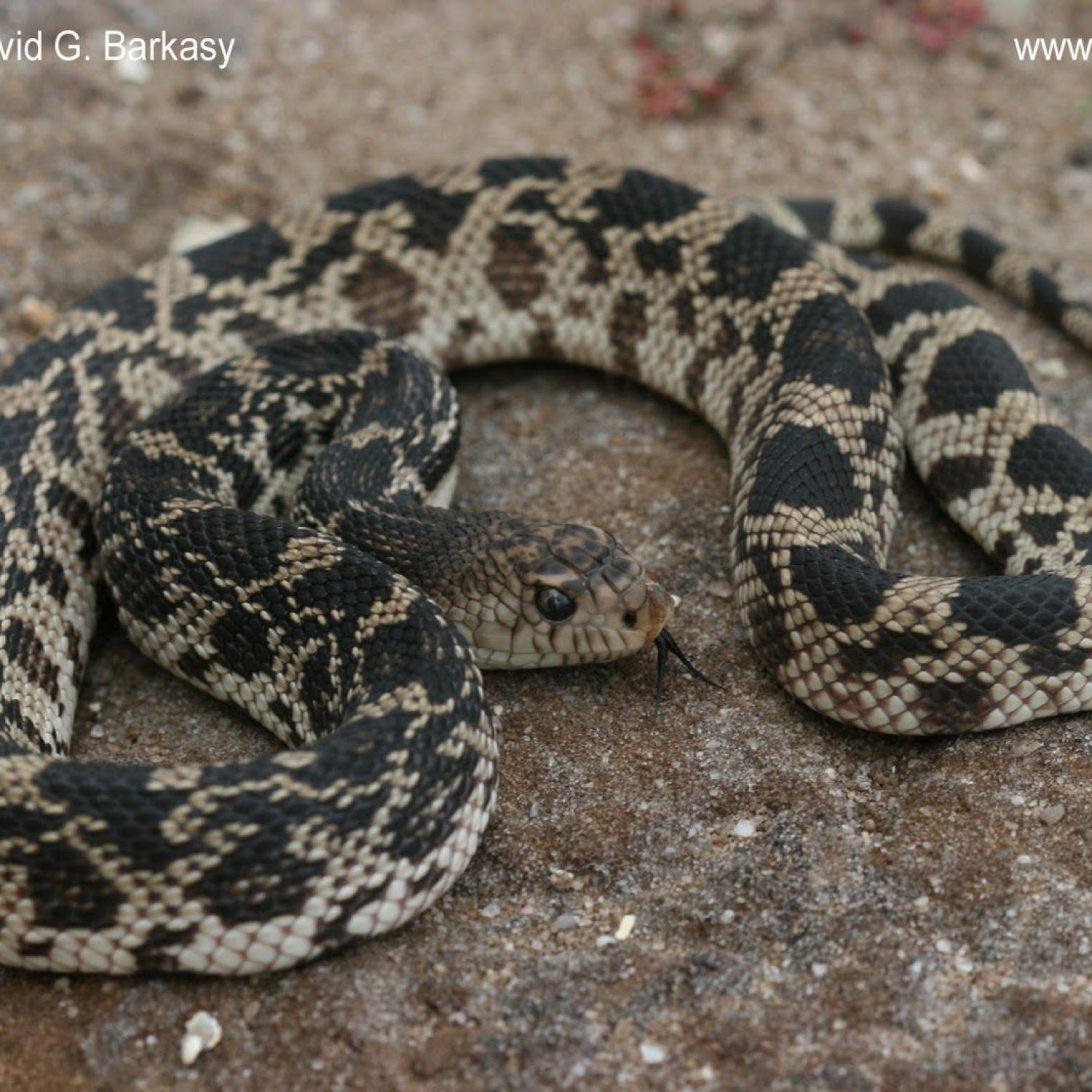
Pine Snake
3 to 6 feet
The Pine Snake, found in the eastern and central regions of the US, is a non-venomous reptile known for its slender and cylindrical body shape. Ranging from 3 to 6 feet in length, it belongs to the Colubridae family and can be easily identified by its unique coloration patterns. Keep an eye out for this beautiful snake on your next nature hike! #PineSnake #Colubridae #NorthAmericanWildlife
Animal Details Summary:
Common Name: Pine Snake
Kingdom: Animalia
Habitat: Forest, grasslands, marshes
Pine Snake: The Master of Camouflage
When you think of snakes, the first image that probably comes to mind is a slithering creature with a distinct pattern or color. However, there is one species of snake that defies this stereotype – the Pine Snake.Scientifically known as Pituophis melanoleucus, the Pine Snake is a reptile that belongs to the kingdom Animalia, phylum Chordata, and class Reptilia. It is part of the order Squamata and the family Colubridae Pine Snake. Commonly referred to as the Pine Snake, it is a fascinating animal with a variety of unique features that make it stand out from other snakes.
Habitat and Distribution
Pine snakes can be found in a variety of habitats, including forests, grasslands, and marshes. They are native to North America, specifically the eastern and central regions of the United States. However, their population has declined due to deforestation and habitat destruction. They are currently listed as a species of Least Concern on the International Union for Conservation of Nature (IUCN) Red List.
Physical Appearance
One of the most distinct characteristics of the Pine Snake is its body shape. Unlike other snakes, it has a slender and cylindrical body. Its head is also noticeably smaller compared to its body, giving it a unique appearance.
The coloration of Pine Snakes can vary depending on the subspecies Pond Skater. However, the most common colors are brown, black, and white. These colors serve as the perfect camouflage for the snake in its natural habitat. The Pine Snake blends in seamlessly with the forest floor, making it difficult for predators to spot it.
Length and Feeding
The average length of a Pine Snake is between 3 to 6 feet, making it a relatively large snake compared to other species. This length allows it to prey on a variety of animals, including rodents, lizards, and other small reptiles. As a carnivorous species, the Pine Snake feeds on these animals, using its strong body to constrict them and then swallowing them whole.
Fun Fact: The Pine Snake's scientific name, Pituophis melanoleucus, comes from the Greek words "pituo" meaning "pine tree" and "phizein" meaning "to love." This name is fitting, as Pine Snakes are often found in pine forests and have a unique love for these trees.
Adaptations for Survival
As mentioned earlier, the Pine Snake's coloration serves as the perfect camouflage in its natural habitat. This is not the only adaptation that this species has developed to ensure its survival. One of the most fascinating features of these snakes is the way they mimic rattlesnakes to scare off predators.
Pine Snakes have the ability to vibrate the tip of their tails against dry leaves, mimicking the sound of a rattlesnake's rattle. This behavior, combined with their similar coloration, makes predators think twice before attacking. This unique adaptation has given them the nickname "bull rattlesnakes."
Another adaptation is their ability to climb trees. The Pine Snake's slender body and strong muscles enable it to navigate through branches and fool potential predators that are unable to climb.
Role in the Ecosystem
The Pine Snake plays an important role in its ecosystem. As a predator, it helps control the population of small animals, ultimately contributing to a balanced ecosystem. In addition, its diet largely consists of rodents, which are considered pests in some areas. Thus, these snakes are beneficial to the environment and can be considered natural pest control.
Conservation Efforts
Despite their declining population, there are currently no specific conservation efforts targeted towards Pine Snakes. However, organizations such as the Center for Biological Diversity are working towards conserving the forests and grasslands where these snakes reside. This indirectly benefits the Pine Snake by preserving its habitat.
Captivating Information about the Pine Snake
Now that we have explored the physical and behavioral characteristics of the Pine Snake, let's dive into some more captivating information about this fascinating species:
• Pine Snakes are known to be excellent swimmers. They can hold their breath for up to 30 minutes and often cross rivers and streams in search of food.
• They are docile snakes and will only bite in self-defense. Even then, their bites are not venomous and pose no threat to humans.
• Pine Snakes are excellent climbers and can maneuver through trees with ease, allowing them to hunt for prey or escape predators.
• In addition to mimicking rattlesnake behavior, Pine Snakes also vibrate their tails to show aggression towards larger predators such as foxes and coyotes.
• These snakes hibernate during the colder months of the year, often sharing dens with other snake species, such as rat snakes and corn snakes.
• Pine Snakes are also popular among collectors and are often bred in captivity. However, it is essential to only purchase from reputable breeders and ensure that the snakes are not taken from their natural habitats.
Conclusion
In conclusion, Pine Snakes are truly a unique species of snake found in North America. From their distinct physical appearance to their fascinating adaptations, these snakes have captured the attention of many. Despite their declining population due to human activities, they continue to thrive in some regions and play a crucial role in their ecosystems.
Next time you are out in the forest, keep an eye out for these masterminds of camouflage. You never know – you may just spot a Pine Snake slithering through the leaves, blending in with its surroundings and showcasing its incredible abilities.

Pine Snake
Animal Details Pine Snake - Scientific Name: Pituophis melanoleucus
- Category: Animals P
- Scientific Name: Pituophis melanoleucus
- Common Name: Pine Snake
- Kingdom: Animalia
- Phylum: Chordata
- Class: Reptilia
- Order: Squamata
- Family: Colubridae
- Habitat: Forest, grasslands, marshes
- Feeding Method: Carnivorous
- Geographical Distribution: North America
- Country of Origin: United States
- Location: Eastern and central regions of the United States
- Animal Coloration: Variable depending on subspecies, typically brown, black, and white
- Body Shape: Slender and cylindrical
- Length: 3 to 6 feet
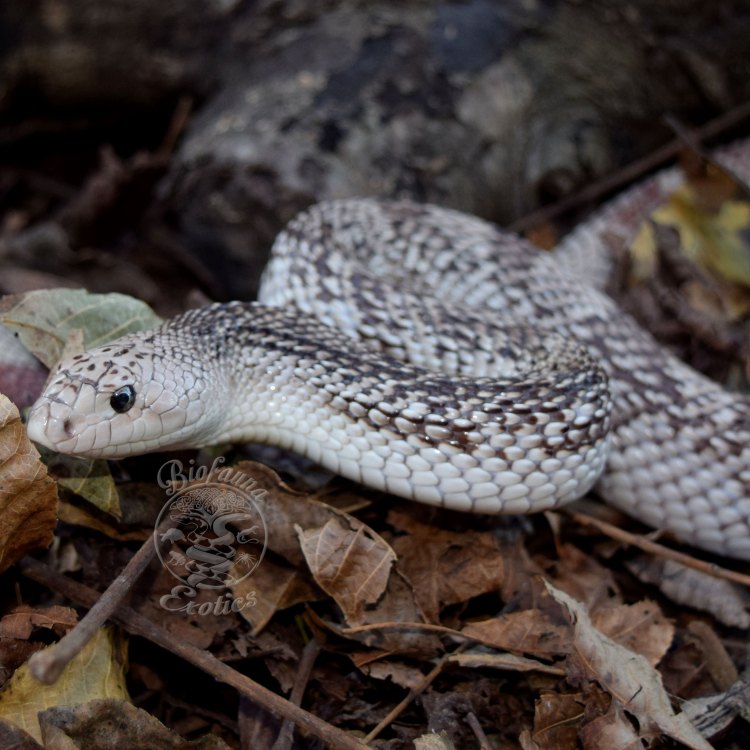
Pine Snake
- Adult Size: 4 to 6 feet
- Average Lifespan: Up to 20 years in the wild
- Reproduction: Sexual
- Reproductive Behavior: Mating occurs in the spring, females lay eggs in the summer
- Sound or Call: Hisses and vibrates tail when threatened
- Migration Pattern: Non-migratory
- Social Groups: Solitary
- Behavior: Nocturnal, burrows and hides during the day
- Threats: Habitat loss, road mortality, illegal collection
- Conservation Status: Least Concern
- Impact on Ecosystem: Key predator that helps control small rodent populations
- Human Use: Popular pet snake species
- Distinctive Features: Large black and white scales on the belly, pointed snout
- Interesting Facts: Pine snakes are excellent burrowers, capable of digging their own tunnels
- Predator: Birds of prey, mammals
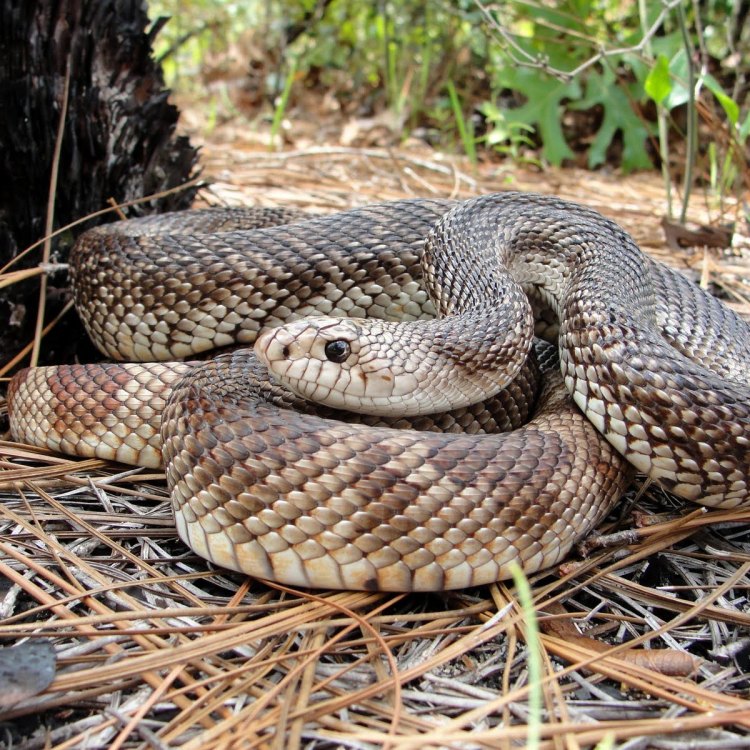
Pituophis melanoleucus
The Fascinating World of Pine Snakes: A Unique Species with Surprising Qualities
Snakes are often portrayed as one of the most feared and misunderstood creatures on Earth. However, within the vast world of snakes, there is a special species that stands out for its unique features and behaviors – the Pine Snake.Pine snakes, also known as bull snakes, are a type of non-venomous constrictor snake found predominantly in North America. These snakes have captured the imagination of many for their distinctive appearance and fascinating lifestyle PeaceOfAnimals.Com. In this article, we will delve into the world of pine snakes, exploring their characteristics, behavior, and importance in the ecosystem.
Size and Lifespan
The first thing that may catch your attention about pine snakes is their size. Adults can reach a length of 4 to 6 feet, making them one of the largest snake species in North America. The record for the longest pine snake ever recorded is a whopping 7 feet long! Interestingly, there is a significant size difference between males and females, with females being larger than males.When it comes to their lifespan, pine snakes have quite an impressive track record. In the wild, they can live up to 20 years, while some have been known to live even longer in captivity. This long lifespan is attributed to their ability to adapt to different environments and their natural resilience.
Reproduction and Behavior
Pine snakes follow a sexual mode of reproduction, where mating occurs in the spring. During this time, males will engage in combat to win over a female Peacock Bass. Once the female has chosen her mate, they will engage in a courtship dance, which involves intertwining their bodies and flicking their tongues.After mating, females will lay a clutch of eggs in the summer, typically around 8 to 10 eggs. These eggs will hatch in late summer, and the young snakes will emerge from their underground nests in the fall.
Pine snakes are solitary creatures, meaning they prefer to live on their own. They are also nocturnal, meaning they are active at night and spend most of their day burrowing and hiding to avoid predators. When threatened, pine snakes will hiss and vibrate their tail, imitating the sound of a rattlesnake to scare off potential predators.
Predators and Threats
Despite their size and formidable appearance, pine snakes face several threats in their environment. Their primary predators are birds of prey and mammals like foxes and coyotes. However, humans also pose a threat to these snakes.One of the most significant threats to pine snakes is habitat loss. As human populations grow, more land is developed, disrupting the natural habitat of these snakes. This loss of habitat also reduces their food sources, making it challenging for them to survive.
Another danger to pine snakes is road mortality. These snakes often cross roads and highways, making them vulnerable to being hit by cars. Additionally, pine snakes face the threat of illegal collection, as they are a popular pet snake species due to their docile nature and impressive size.
Conservation Status and Ecosystem Importance
Despite these threats, pine snakes are currently listed as "Least Concern" on the IUCN Red List, which means they are not currently at risk of extinction. However, their population numbers are declining, raising concerns about their future.Pine snakes play a crucial role in the ecosystem as a key predator. They help control the population of small rodents, such as mice and rats, which can have a significant impact on the ecosystem if left unchecked. By keeping these populations in check, pine snakes contribute to maintaining the balance in their environment.
Distinctive Features
One of the most striking features of pine snakes is their distinct appearance. They have large, black and white scales on their belly, giving them a unique and eye-catching look. These scales serve a purpose other than just aesthetics – they help the snake blend in with its surroundings, making it difficult for predators to spot them.Pine snakes also have a pointed snout, which they use for digging. They are excellent burrowers, capable of digging their own tunnels. These tunnels serve as a hiding place during the day and a place to lay their eggs.
Human Use and Interesting Facts
In recent years, pine snakes have become a popular pet snake species due to their docile nature and manageable size. However, it is essential to note that owning a snake is a big responsibility and requires proper care and expertise.Apart from being popular pets, pine snakes have several other interesting qualities. For one, they are excellent climbers and can even scale trees to hunt for prey. They are also known to be excellent swimmers, using their muscular bodies to glide through the water effortlessly.
Another interesting fact about pine snakes is that they are very vocal creatures. While they do not have vocal cords, they can make a hissing sound and rattle their tail to communicate with other snakes and scare off predators.
Conclusion
In conclusion, pine snakes are a fascinating species with unique features and behavior. From their size to their burrowing abilities, they are a marvel of the natural world. However, like many other animals, they face threats from human actions. It is essential to protect their natural habitat and limit our impact on their environment to ensure that these magnificent creatures continue to thrive for generations to come.
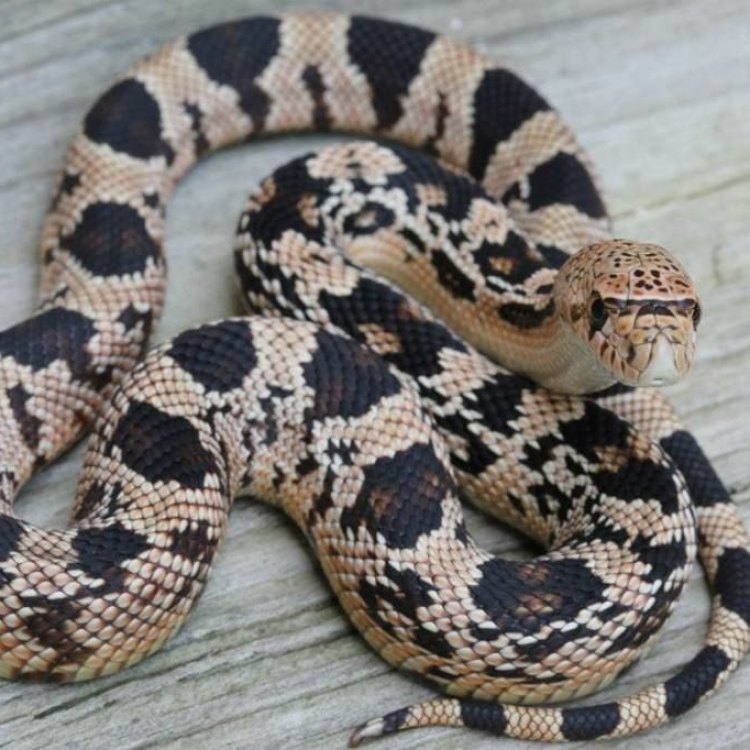
Pine Snake: The Master of Camouflage
Disclaimer: The content provided is for informational purposes only. We cannot guarantee the accuracy of the information on this page 100%. All information provided here may change without prior notice.

